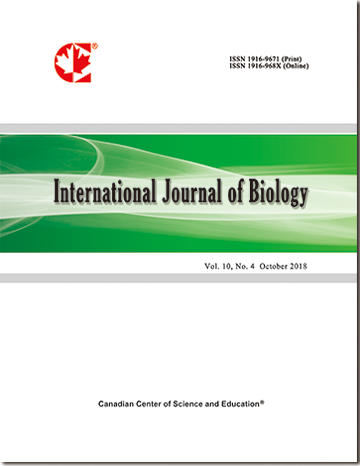Population Genetics of Drosophila ananassae: Evidence for Population Sub-Structuring at the Level of Inversion Polymorphism in Indian Natural Populations
- Bashisth Singh
- Pranveer Singh
Abstract
Drosophila ananassae is a cosmopolitan and domestic species distributed in the tropical, subtropical and mildly
temperate regions. Population structure analysis in forty-five Indian natural populations of D. ananassae was performed
employing three cosmopolitan inversions as markers. Pairwise FST analysis and genetic distance (D) values showed strong
genetic differentiation. Though, lowermost values correspond to geographically closest populations, we did not find any
significant ‘isolation by distance’ effect. Values of gene flow based on FST estimates are very low (Nm < 5). All these
findings, viz. strong genetic differentiation and minimal gene flow indicate strong sub-structuring in Indian natural
populations of D. ananassae at the level of inversion polymorphism. This finding is particularly intriguing in case of D.
ananassae as it is frequently transported via human traffic. Given limited gene flow, populations are expected to diverge
genetically due to drift. Low level of gene flow coupled with high degree of genetic differentiation might have occurred
historically and is maintained currently. Demographic properties, historical and contemporary events and other factors are
more important in shaping the patterns of population sub-structuring, genetic differentiation and gene flow than mere
terrestrial habitat characteristics (un) favorable for migration.
- Full Text:
 PDF
PDF
- DOI:10.5539/ijb.v2n1p19
Journal Metrics
h-index (December 2021 ): 37
i10-index (December 2021 ): 149
h5-index (December 2021 ): N/A
h5-median (December 2021 ): N/A
Index
- ACNP
- AGRICOLA
- BASE (Bielefeld Academic Search Engine)
- CAB Abstracts
- CiteFactor
- CNKI Scholar
- CrossRef
- DTU Library
- Elektronische Zeitschriftenbibliothek (EZB)
- Excellence in Research for Australia (ERA)
- Google Scholar
- Infotrieve
- LIVIVO (ZB MED)
- LOCKSS
- Max Planck Institutes
- MIAR
- PKP Open Archives Harvester
- Qualis/CAPES
- ResearchGate
- ROAD
- SafetyLit
- SHERPA/RoMEO
- Technische Informationsbibliothek (TIB)
- Universe Digital Library
- WorldCat
Contact
- Ryan JonesEditorial Assistant
- ijb@ccsenet.org
